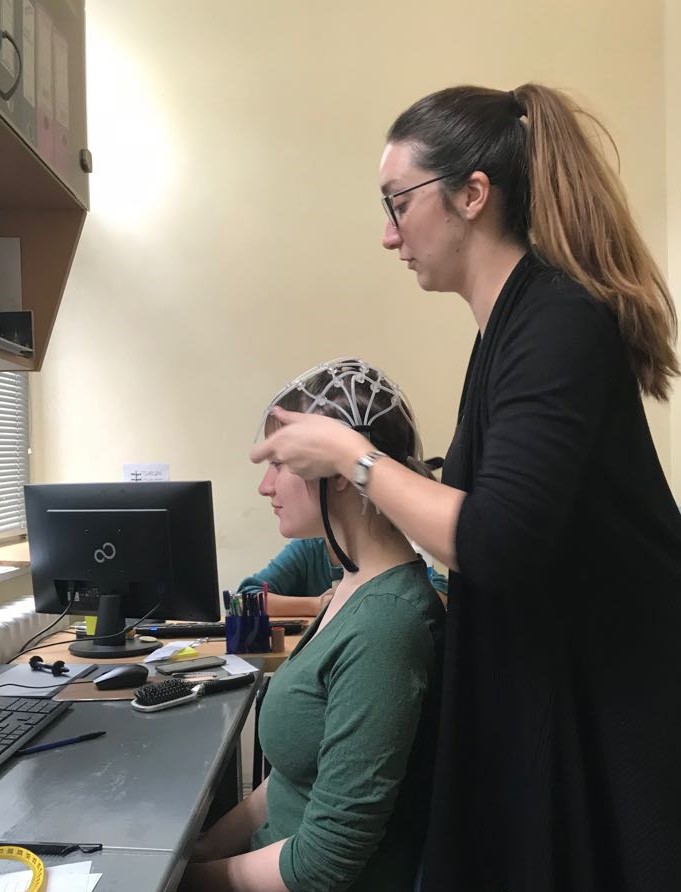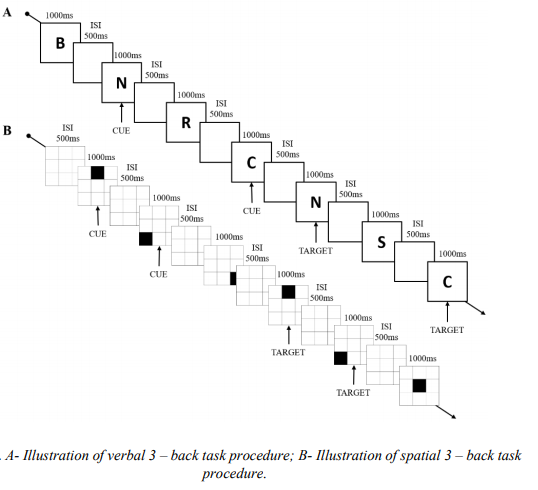Methods and equipments
Transcranial electric stimulation (tES) is noninvasive neuromodulation technique based on the use of weak electric current in order to modulate cortical excitability. This technique allows us to stimulate different brain regions in a safe and painless manner and consequently fascilitate certain functions. tES is already used for clinical treatment of various disorders such as depression, Parkinson’s disease and motor disorders. There are findings that suggest that tES can also be used to improve cognitive functions, but these effects are still being investigated. Our group is investigating the effects of different tES protocols on cognitive functions, with the main focus on memory. Additionally, the group is working on developing novel protocols, such as theta rythym oscillatory stimulation, and assessing their efficiancy.
Equipment: Jonos-4 (Electronic Design Medical D.O.O., Serbia), STMISOLA (BIOPAC Systems, Inc., USA) + CED 1401 Plus (Cambridge Electronic Design Limited, ), StarStim 32 (Neuroelectrics, Spain)
Transcranial magnetic stimulation (TMS) is a noninvasive form of brain stimulation in which a changing magnetic field is used to cause electric current at a specific area of the brain through electromagnetic induction. An electric pulse generator is connected to a magnetic coil, which in turn is positioned over the scalp. The changing electric current within the coil induces a magnetic field which passes through the scalp and causes a second inductance of inverted electric charge within the brain itself. The stimulation can be carried out either by individual pulses or by trains of repeated pulses.
The effects of the repetitive TMS (rTMS) vary based on frequency and intensity of the magnetic pulses as well as the length of the trains. TMS has the potential to be used in a wide range of neurological and psychiatric diseases; it is also safe for use in healthy subjects for research purposes. The use of TMS in our group is primarily focused on basic and clinical research of motor functions as well as the recovery of language functions in the post-stroke aphasia.
Equipment: Magstim 200² and Magstim Rapid² stimulators (Magstim Ltd, UK) + CED 1401 Plus (Cambridge Electronic Design Limited, UK) + Ag-AgCl EMG surface electrodes.
To measure different cognitive functions we use computerized cognitive tasks. We have developed several associative memory tasks in our lab:
- Face-word cued recall task –retrieval of associative face-word pairs (20 and 30 pairs task versions available in 4 parallel forms)
- Face-word associative memory task – recognition and retrieval of associative face-word pairs (30 pairs task version available in Serbian, English and Danish translation)
- Face-scene associative memory task- recognition and retrieval of associative face-landscape pairs (30 pairs task version available in Serbian, English and Danish translation)
- Object-location task – recognition and cued recall of spatial locations of different objects. (15 pairs task version available in 2 parallel forms and 24 pairs task version available in 4 parallel forms)
- Word pairs associative memory task – recognition and retrieval of pairs of words. (30 pairs of words task version available in Serbian, English and Danish translation)
- Scene pairs associative memory task – recognition and retrieval of pairs of landscape images (30 pairs task version available in Serbian, English and Danish translation)
- Explicit and implicit associative memory task – Implicit and explicit associative memory of landscape image – object pairs adapted for universal use in different cultures (48 pairs task version available in with instructions in Serbian, English, Danish and Polish translation. We are currently working on Czech and Japanese instruction translations).
Beside associative memory tasks we have also developed executive functions and working memory tasks like Keep-track task (available in 3 parallel forms) and N-back task (2-back and 3-back task versions). We have also developed spatial navigation task in virtual environment (available in 3 parallel forms). Finally, we have developed a comprehensive battery of higher cognitive functions tests (4 parallel forms adapted for experimental setting).
To develop and implement our experimental cognitive tasks we use platforms like: OpenSesame (https://osdoc.cogsci.nl/), TotalAssessment (https://totalassessment.net/) and E-Prime (https://pstnet.com/products/e-prime/).
To assess specific functions and their rehabilitation in people with different neurological conditions, we use standardize assessment tools. Our group took part in the development, cross-linguistic adaptation, and standardization of assessment tools for aphasia (The Comprehensive Aphasia Test – CAT), as well as for children language delays/disorders (Cross-linguistic lexical task – LITMUS-CL).
Electroencephalography (EEG) is a method for recording electrical brain activity. Multiple electrodes positioned across scalp are used for detection of voltage differences which reflect synchronized summed electrical activity of the brain’s neural circuits. EEG allows insight in fluctuations of neural activity induced by a specific event (i.e. a stimulus or a response) – the Event Related Potentials (ERP) approach. Additionally, analysis of the oscillations in neural electric activity in the frequency domain (spectral EEG content analysis) provides a possibility for isolating specific brain states and distinct mental processes. Our group employs EEG paired with cognitive assessment and non-invasive neuromodulation with the aim to investigate physiological processes and changes associated with cognitive activities as well as the effects of the application of noninvasive stimulation on those cognitive activities.
Equpment: STARSTIM32 (Neuroelectrics, Spain); SMARTING mobi (mBrainTrain LLC, Serbia)






